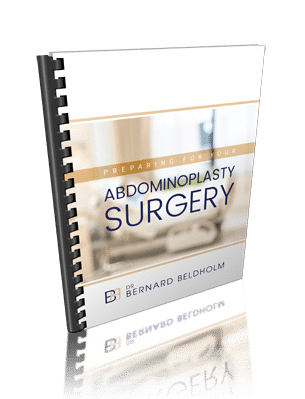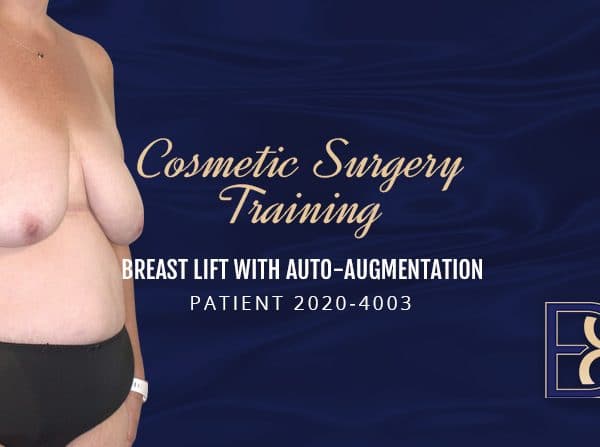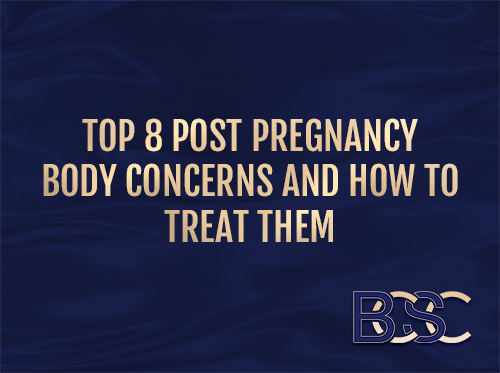Body of Proof: Understanding, Minimising, and Embracing Abdominoplasty Scars
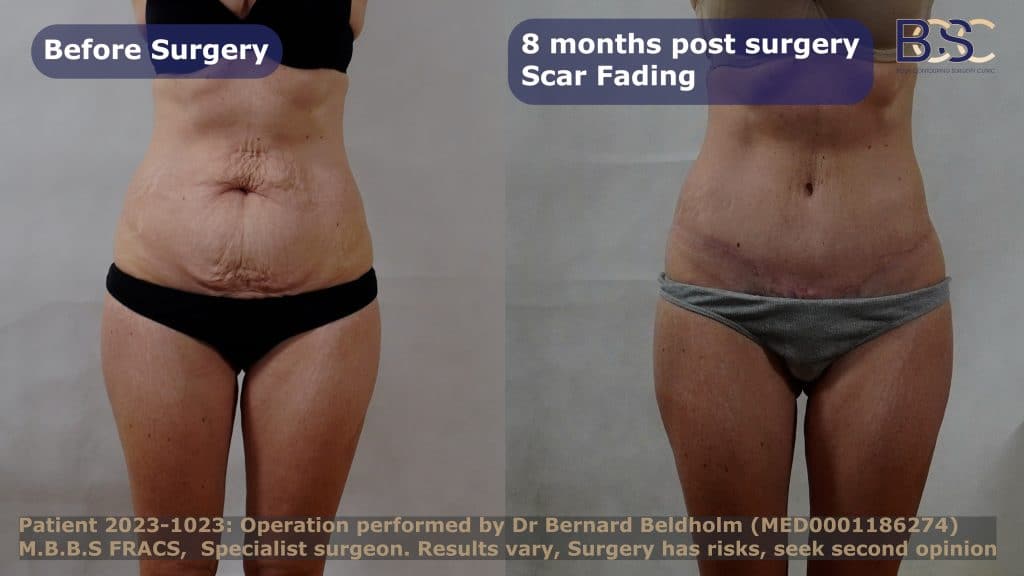
Surgical scar after tummy tuck procedure | scar treatments
Disclaimer: Operation performed by Dr Bernard Beldholm. Adult content, surgery has risks; individual results vary, seek 2nd opinion. Please see the full disclaimer.
Abdominoplasty is an umbrella term for a group of procedures that contour the midsection, and tighten the abdomen, while also relieving discomfort. By removing excess fat, excising skin, and tightening the abdominal muscles,Abdominoplasty is among the most popular surgeries in Australia, ranking only behind breast augmentation, eyelid surgery, and liposuction.
Like all surgical journeys, however, there is a reminder left behind. While scars tell a story of courage, change, and resilience, they may also be a potential source of concern. Understanding the nature of Abdominoplasty scars, how they form, and the ways to care for and minimise their appearance.
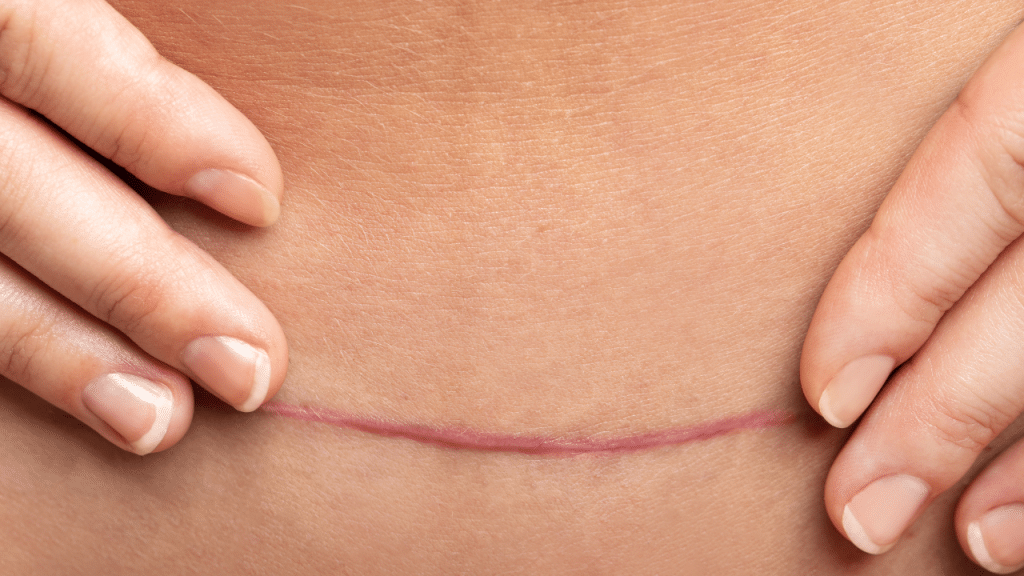
Scarred skin
A toned body is universally desirable. Still, not everybody is blessed with supermodel genetics. For some, no matter how much they exercise, achieving a flat stomach with pleasing contours is a distant dream. Sudden and dramatic weight loss and complicated pregnancies can lead to loose skin that hangs in a fold over the belly. And nobody has yet devised a fitness regimen to exercise skin. For people unable to achieve their ideal body image, abdominoplasty is always an option.
But while surgical intervention does offer a tighter, contoured abdomen, in the form of a scar will also be the result.
Visible scars resulting from abdominoplasty procedure, which can be red and raised or pale and flat, change over time and can be made less visible through various techniques, which I will explore in this article.
Abdominoplasty Scar Appearance
Many patients are concerned about the surgery scar when considering getting an abdominoplasty. But the concerns over scarring largely stem from extreme examples they may have come across. While an Abdominoplasty scar will never completely disappear even once completely healed, the scars can be managed so they will heal and fade over time.
Factors Affecting Tummy Tuck Scars
Before considering Abdominoplasty surgery, consider the following factors. They will determine how your visible scar will look in the months and years to come.
1. Type of Abdominoplasty Surgery
Not all tummy tucks are created equal. Depending on how much excess skin is removed, and how much fat removal is required, I will recommend which procedure would result in the best outcome.
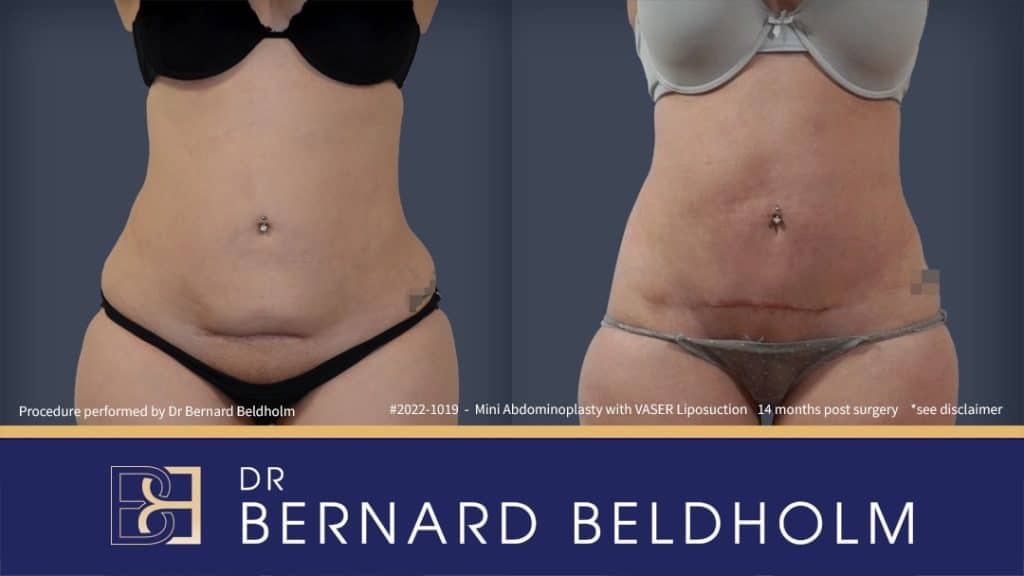
Mini Abdominoplasty | Dr Bernard Beldholm
Tattoo blurred for privacy
Disclaimer: Operation performed by Dr Bernard Beldholm. Adult content, surgery has risks; individual results vary, seek 2nd opinion. Please see the full disclaimer.
Mini Abdominoplasty
This surgery is meant for patients with loose skin on their lower abdomen. Their upper abdomen does not require surgery. A mini tummy tuck leaves a small scar along the bikini line and no scars elsewhere.
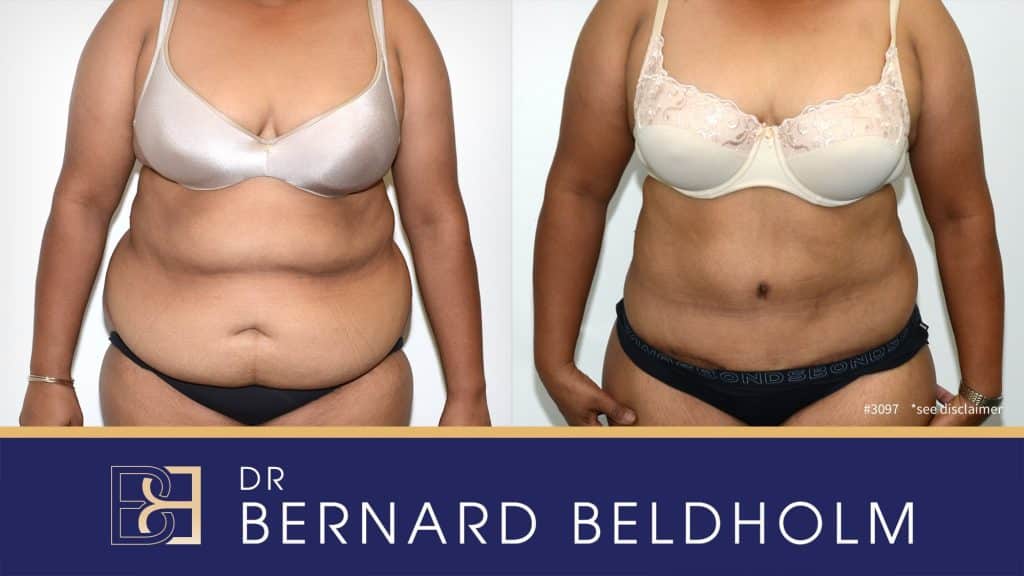
Standard tummy tuck incision | Abdominoplasty | Dr Bernard Beldholm
Disclaimer: Operation performed by Dr Bernard Beldholm. Adult content, surgery has risks; individual results vary, seek 2nd opinion. Please see the full disclaimer.
Full Abdominoplasty
The full Abdominoplasty is meant for patients who have undergone weight loss or pregnancy and have significant amounts of loose skin and stretch marks. The scar from a full Abdominoplasty raditionally runs from hip to hip.
Extended Abdominoplasty
An extended Abdominoplasty is for drastic cases of weight loss or multiple pregnancies. There is loose skin not only on the stomach but also on the hips. In an extended Abdominoplasty surgery, the scar runs beyond the hip bones and around the patient’s flanks.
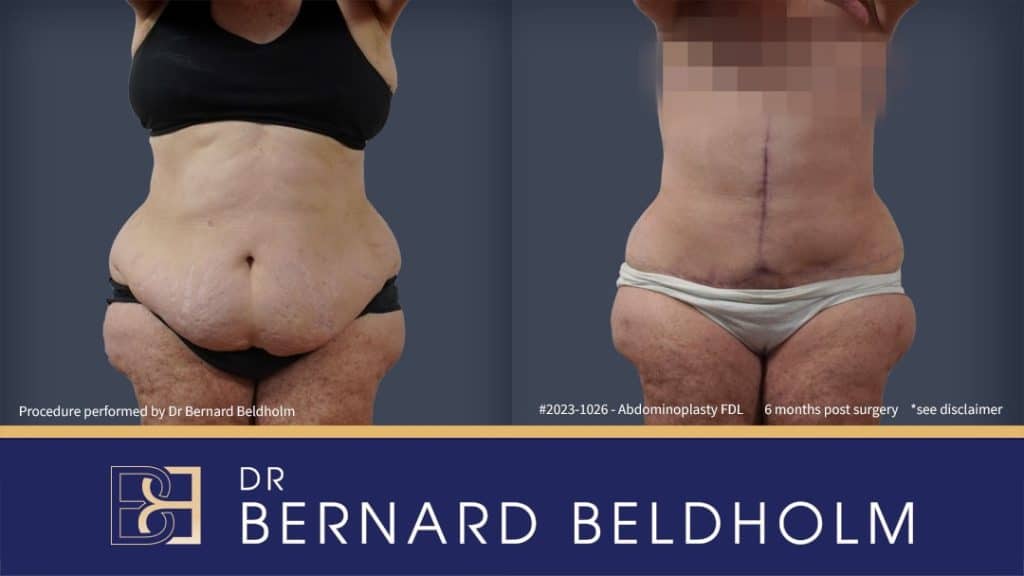
Horizontal and vertical scar | Dr Bernard Beldholm
Nipple-areola covered to comply with No nudity
Disclaimer: Operation performed by Dr Bernard Beldholm. Adult content, surgery has risks; individual results vary, seek 2nd opinion. Please see the full disclaimer.
Fleur-de-Lis Abdominoplasty
This variation of abdominoplasty gets its name from the shape of the scar. Like the symbol of the fleur-de-lis, there will be both a horizontal and vertical scar running along the hip bone and from the lower breastbone to the pubic area. This surgery is frequently used for patients who have undergone weight loss surgery and lost a substantial amount of weight.
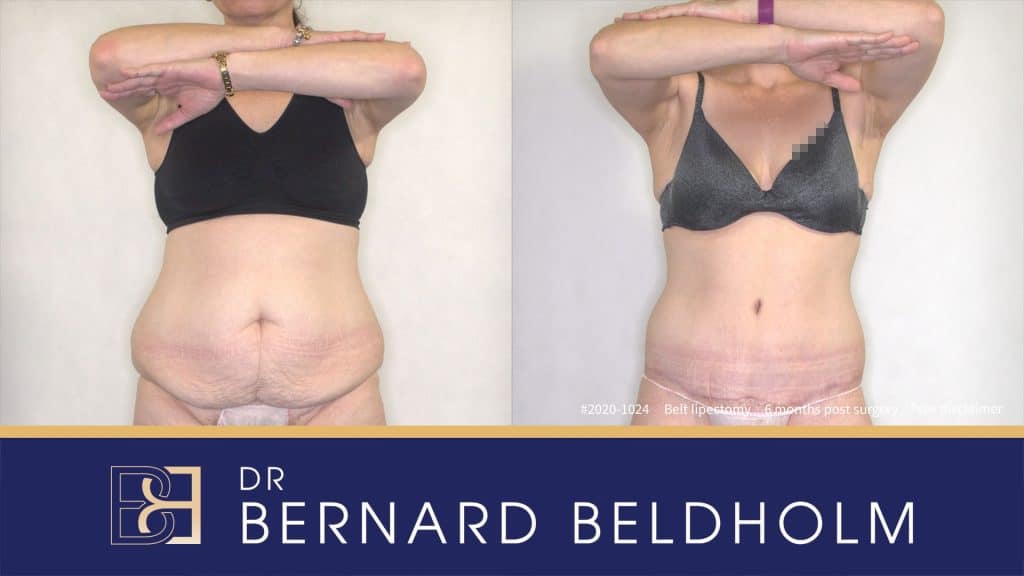
Minimize scarring | belt lipectomy
Tattoo blurred for privacy
Disclaimer: Operation performed by Dr Bernard Beldholm. Adult content, surgery has risks; individual results vary, seek 2nd opinion. Please see the full disclaimer.
Belt Lipectomy
The total body lift, also known as a belt lipectomy or circumferential Abdominoplasty, removes fat from areas beyond the stomach, including the sides, back, and upper thighs. As the name implies, circumferential tAbdominoplasty leave scars around the lower abdomen, waist, and lower back.

Genetics
2. Genetics
Just like they determine the shape of your natural body, genetics also rule the appearance of your scars. Some people are more prone to scarring than others. In certain individuals, the growth of keloid scar tissue can make scars look rougher than normal. Ethnicity also plays a part. Caucasian patients’ scars eventually fade to a pale, whitish hue, while people of colour’s scars display excess pigmentation.
3. Adherence to Post-surgery Care
To reduce complications, following the surgeon’s instructions to the letter ensures optimal wound healing. In the immediate aftermath of the operation, it’s extremely important to get plenty of rest, make sure your dressings on the surgical wound is in place, and keep the original wound site clean and dry.
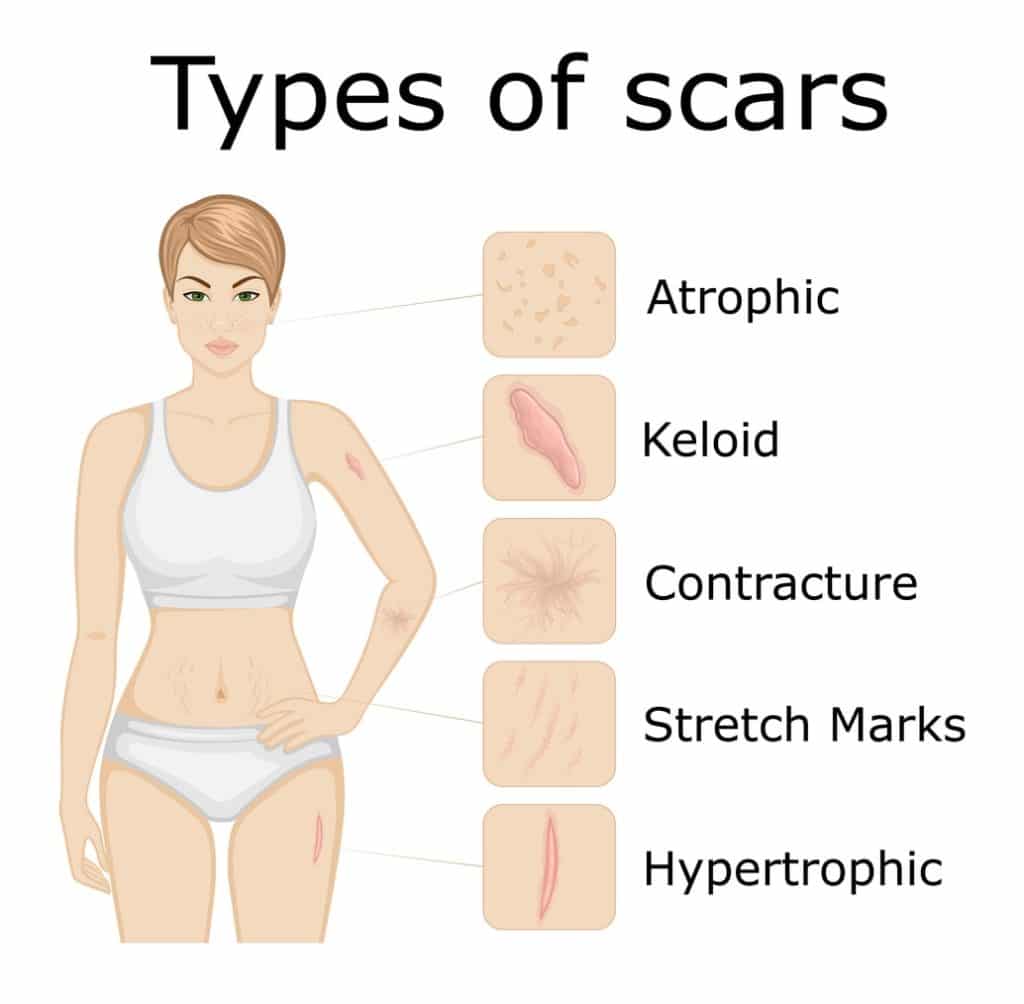
Stages of healing following abdominoplasty
Stages of Abdominoplasty Scar
Scars resulting from abdominoplasty are an inevitable part of the procedure, but their appearance evolves significantly as the incision heals. Understanding the stages of scar healing can help manage expectations and optimize results.
Immediately After Surgery (Weeks 1–3)
- Appearance: The scars are fresh, red, and slightly raised. They may appear swollen or tender due to inflammation.
- Location: Typically, the incision line is low on the abdomen, often within the bikini line, and may extend from hip to hip. A smaller scar may be present around the belly button in a full tummy tuck.
- Healing Process: The incision begins to close as the body produces collagen. Steri-strips or surgical tape may cover the area, and stitches (if not dissolvable) are removed during this time.
Early Healing Phase (Months 1–3)
- Appearance: Scars darken and become more prominent as they transition from acute healing to the remodeling phase. They might feel firm and raised.
- Changes: Increased collagen production leads to thickening of the scar, a natural part of wound healing.
- Management: Silicone sheets or scar gels may be recommended to reduce redness and promote flattening. Massage techniques and sun protection are critical to avoid hyperpigmentation.
Remodeling Phase (Months 4–12)
- Appearance: Scars gradually flatten and fade, changing from red or pink to lighter shades closer to the surrounding skin tone. The firmness diminishes.
- Healing Process: Collagen is reorganized, and the scar tissue becomes softer and less noticeable.
- Management: Consistent scar care, such as hydration, silicone therapy, and sunblock, helps optimize the scar’s appearance.
Mature Scar (1–2 Years Post-Surgery)
- Appearance: The scars reach their final form, often as thin, flat, and pale lines. In some individuals, the scars may remain slightly darker or more textured depending on skin type and genetics.
- Longevity: While scars never completely disappear, they become significantly less noticeable over time.
Wound Management for Minimising Scars
- Follow Post-Operative Instructions: Adhere to your surgeon’s instructions during the recovery period and abide by all activity restrictions for at least six weeks. This includes avoiding strenuous exercise, sexual activity, uv exposure, and heavy lifting, and caring for your surgical dressings to reduce scarring.
- Topical Products: Silicone gel, vitamin E, and scar cream may help to reduce scar prominence.
- Sun Protection: Always cover scarred skin and apply sunscreen (SPF 30+) to prevent discolouration.
- Non-Invasive Treatments: Options like microneedling, laser therapy, or chemical peels can ** scar appearance.
- Vitamin E: Many trusted source suggests that using vitamin E topically can ** the appearance of scars. It can also help to keep the scar moisturized. Be sure to use 100 percent pure vitamin E oil.
- Revision surgery: For certain types of scars, inluding keloid scars that don’t respond to topical treatments and non-invasive interventions, scar revision surgery is a viable option.
For more scar management tips, my related blog article, Best Tips for Abdominoplasty Scar Fading & Care.
FAQs

Dr Bernard Beldholm (MED0001186274) M.B.B.S B.Sc (Med) FRACS surgical planning appointment
How can I protect my scars from sun damage?
Protecting your abdominoplasty scars from sun damage is crucial for optimal healing and minimizing their visibility over time. Exposure to the sun’s UV rays can darken scars, making them more noticeable and potentially delaying the healing process. To safeguard your scars, always apply a broad-spectrum sunscreen with at least SPF 30 to the area. These proactive measures can make a significant difference in how your scars heal and appear long-term.
Can keloid or hypertrophic scars form after an abdominoplasty?
Yes, although keloid or hypertrophic scars can form after an abdominoplasty, they are not common. These raised scars occur due to excessive collagen production during healing and are more likely in individuals with a genetic predisposition. Treatments like silicone sheets, steroid injections, or laser therapy can help manage their appearance.
References
- Mitchell, R. T., & Rubin, J. P. (2014). The Fleur-De-Lis abdominoplasty. Clinics in plastic surgery, 41(4), 673–680.
- Chambers, A. (2020). Management of scarring following aesthetic surgery. In Springer eBooks (pp. 385–395).
- Schmieder, S. J., & Ferrer-Bruker, S. J. (2023, September 4). Hypertrophic scarring. StatPearls – NCBI Bookshelf.
- Vidal, P., Berner, J. E., & Will, P. A. (2017). Managing Complications in Abdominoplasty: A Literature Review. Archives of plastic surgery, 44(5), 457–468.
- Pijpe, A., Gardien, K. L. M., Van Meijeren-Hoogendoorn, R. E., Middelkoop, E., & Van
- Zuijlen, P. P. M. (2020). Scar symptoms: pigmentation disorders. In Springer eBooks (pp. 109–115).
- Mendes, F. H., Donnabella, A., & Fagotti Moreira, A. R. (2019). Fleur-de-lis Abdominoplasty and Neo-umbilicus. Clinics in plastic surgery, 46(1), 49–60.
- Ziegler, U. E., Ziegler, S. N., & Zeplin, P. H. (2017). Modified Fleur-de-lis Abdominoplasty for Massive Weight Loss Patients. Annals of plastic surgery, 79(2), 130–134.
- Dellon, A. L. (1985c). Fleur-de-lis abdominoplasty. Aesthetic Plastic Surgery, 9(1), 27–32.
- Di Summa, P. G., Wettstein, R., Erba, P., Raffoul, W., & Kalbermatten, D. F. (2013). Scar asymmetry after abdominoplasty. Annals of Plastic Surgery, 71(5), 461–463.
- De Decker, I., Beeckman, A., Hoeksema, H., De Mey, K., Verbelen, J., De Coninck, P., Blondeel, P., Speeckaert, M. M., Monstrey, S., & Claes, K. E. Y. (2023). Pressure therapy for scars: Myth or reality? A systematic review. Burns : journal of the International Society for Burn Injuries, 49(4), 741–756.
- Van Den Kerckhove, E., & Anthonissen, M. (2020). Compression therapy and conservative strategies in scar management after burn injury. In Springer eBooks (pp. 227–231).

